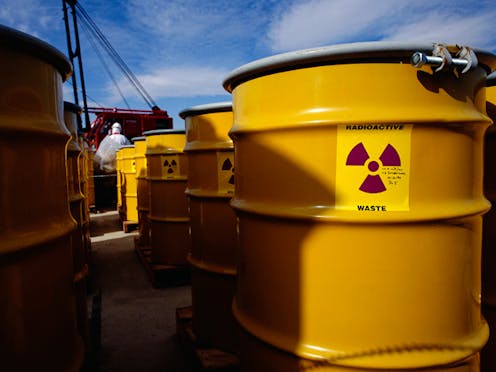
Science + Tech – Articles, Analysis, Opinion
Displaying 3451 - 3475 of 3604 articles

Mathematics and cooking can both be about problem solving, excitement, aesthetics. And it’s for you to decide for yourself what you like and don’t like in both realms.

The climate is changing. Development patterns that have hardly served us well in the past certainly won’t serve us well in the future. Now is the time to adapt.

With billions upon billions of stars out there and probably at least as many planets, it seems almost silly to think there isn’t life somewhere else. Where are all our ET friends (or overlords)?

Annihilate the Aedes aegypti mosquito population and you’d stop dengue fever from infecting up to 100 million people worldwide annually. Here are some high-tech methods under development.

The dead animal specimens that comprise natural history collections contribute a lot toward scientific understanding of their still-living counterparts – and those that have gone extinct.

When the sun belches out high-energy solar storms into space, fair warning would be appreciated by those who run technologies that can be affected here on Earth. A new technique promises better forecasts.

Kids who think being good at mathematics is just a matter of God-given talent are less likely to pursue math-related fields. But research says this kind of belief is misguided.

Sometimes the best way to deal with mountains of data is to turn to the public for help. That’s what Snapshot Serengeti did to classify millions of photos from savanna camera traps in Tanzania.

What’s behind a plant scientist’s research getting reported in over 4,000 media outlets? Here’s her post-game analysis.

New research couldn’t find evidence for a controversial theory of how our sense of smell works.

Hurricanes can be deadly to those in their path. Officials don’t want to unnecessarily alarm before solid forecasts are in place, but residents need enough time to prepare and heed evacuation orders.

Everybody wants a quick shorthand for a storm’s damage potential. But the index we hear used most often isn’t the best option.

We’re no longer caught off guard when hurricanes make landfall, the way people were into the early 1900s. Better communications, measurements and observations all feed into better forecasts and more warning.

Forecasting successes can breed complacency in the general public. But all hurricane damage isn’t necessarily contained within the “cone of uncertainty.”

As social media slices and dices us into profile view rankings, numbers of likes and retweets, and follower engagement data, we constantly reflect on and recalibrate our digital selves.

Even citizens of gender-equal countries associate science with men. The stereotype persists, though weakened a bit in countries with more women doing science. How can we put it to bed once and for all?

The majority of water that people use goes to agriculture. In a drier, hungrier future, we’ll need to use what water we have with less waste. Technologies being developed now will help.

The Nobel Prize winning mathematician made lasting contributions in the fields of game theory and topology. Famously portrayed by Russell Crowe in the movie A Beautiful Mind, he died May 23 at age 86.

Even the biggest proponents of nuclear power can’t ignore 10,000 metric tons of spent fuel globally every year. What if we could recycle every last atom of nuclear waste?

Stone tools excavated in Kenya date back 3.3 million years – making them about a million years older than the oldest known fossils from our own hominid genus Homo. Who made and used these tools?

The basics of fission physics have stayed the same over the decades. But power-generating reactor designs have evolved, turning to new coolants, recycled fuel and other innovations.

Critics of controversial science like GMOs and cloning often invoke the myth of Frankenstein to highlight the dangers of new technology. But these critics may overlook the moral of Shelley’s story.

The tides come in, the tides come out. But what is a sea’s level? Technology has evolved since we first started gauging the height of the ocean in comparison to the land.

Collect all the data you want, but if you can’t figure out what you’re looking at, it’s useless. Topologists look for spatial relationships to figure out what the data can tell us.

These laboratory-made metals have unusual properties that consumer electronics manufacturers love. New research used high-energy X-rays to figure out why.
